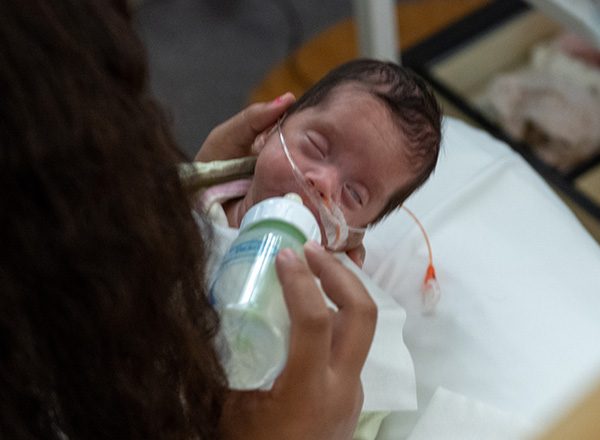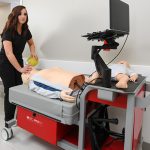It was the start to the day like any other. Most of the neonatal intensive care unit was open, and I had an assignment in the front room taking care of some of our tiniest infants. Maureen was in charge, which usually bring a sense of calm over the unit, as she is so detailed with game plans.
An emergency in Labor and Delivery
It was still early in the morning when the secretary got a call for a crash C-section in OR 3 with heart rate down. I watched as Maureen and Dr. Kim rushed down to Labor and Delivery. After they left, I had this strange sense that something was very bad. Another relief charge, Jenni, and I were engaged in a conversation when the code white bell rang for L & D, OR 3. In that moment we both said at the same time, “are you going, or am I?” And without hesitation I said, “I'll go.”
I ran down the stairs to the 2nd floor. Each step, I was saying out loud, “don't fall, don't fall, don't fall!” I burst through the door after scanning my badge and the alarm still went off. As I approached the OR doors, my heart was racing. I think, in my mind, I thought I would get in there and they would have resuscitated the infant. That was not the case.
Lifesaving resuscitation for newborn
I had never seen an infant so very pale in my entire career. Compressions had been started and Dr. Kim had already intubated, which was very impressive since I arrived at less than 2 minutes of life. We had no heart rate.
The entire code was like a well-oiled machine. I wish it could have been recorded, as it shows incredible teamwork and communication. Dr. Kim was leading the code, but Maureen was the shining star. One step ahead the entire time. She was so clear and calm.
After she directed me to get the UVC tray ready, get sterile and clean the umbilical cord for Dr. Kim to place lines, I switched in the rotation for compressions. It was in this moment the severity of the situation encompassed my entire being.
Mastery learning kicks in
I remember hearing Dr. Kim say early on that we would only go for 15 minutes. My eyes were glued to that Apgar timer. It felt like all at once time was going too slow and too fast. I was focused on my hands, my depth, my rate of compressions and I realized they had muscle memory. Not from previous codes, in fact it had been 3+ years since I had done compressions in an actual code. No, I had muscle memory from RQI. The practice every 3 months.
The timer continued and we still pressed on. As we approached the 15-minute mark, my heart began to sink that Dr. Kim was going to call it. 14:55, 14:56, 14:57, 14:58, 14:59, 15:00… Then Dr. Kim said, “Keep going!” So, I continued and at 17 minutes and 43 seconds we had a heart rate. We had a heart rate? Yes, we had a heart rate.
We contacted CHOC in Orange for immediate transfer for brain cooling. As we arrived up to our unit, we were met by 3 more nurses who took over to stabilize the infant for transport, giving blood products, bolus's, and starting drips.
RQI impacts patient’s outcome
After the infant was transferred, we took a quick deep breath and made our way back down to L & D for a debrief. The language was unanimous: it was a really calm, well-communicated code. But what stuck out the most was that Dr. Kim said the only reason that we kept going after the 15 minutes was that the compressions were so effective that he saw a tinge of color return to the infant’s head. I then made a comment, thanks to RQI!
We later found out that the infant responded well to brain cooling and was discharged home a few weeks later. The MRI revealed no brain damage! True miracle. True teamwork.
Prepared to respond thanks to leadership and CPR education
As I was able to witness and participate in such a well-organized, high-intensity situation, I feel as though I saw true leadership in action. I know that I can take what happened in this situation and use it as an example in the future. I improved my leadership by listening and feel I will be able to communicate well in future situations. Hopefully, leading others to where they need to be when it comes to a high stress event.
I am so grateful for the innovation that RQI has brought to our hospital. Even though every 3 months nurses say, “Again, didn't we just do it?” I truly feel it is assisting with muscle memory and calmness should a nurse enter a code situation. I look forward to new innovations that CHOC at Mission brings and I hope to be a part of them.
Mariah Snyder, BSN, RN, C-ELWB, CLE is a nurse in the NICU at CHOC Children’s at Mission Hospital.









